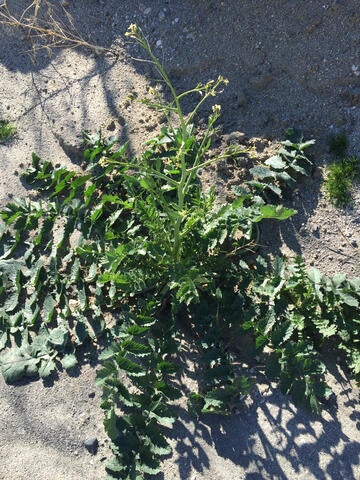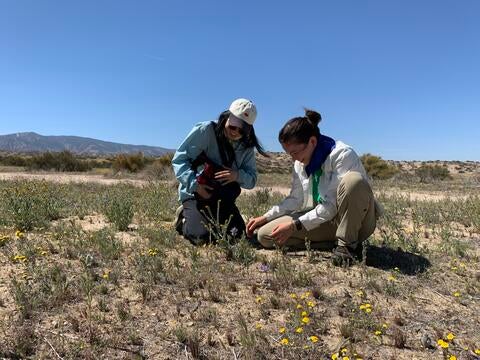We reach more than 65,000 registered users in Dec!! Register Now

Invasive weed threatens Southern California’s deserts
- July 04, 2025
- 3 Views
- 0 Likes
- 0 Comment
Saharan mustard disrupts desert plant diversity, weakens recovery from climate swings
Once thought resistant to invasion, regional deserts are losing native plants to aggressive weedy species like Saharan mustard. New research shows its spread is disrupting biodiversity and reducing the desert’s ability to recover from extreme climate swings. 
The seed bank—a reservoir of dormant seeds that resides in the top five centimeters of the soil—acts as a buffer against extreme weather by allowing plants to germinate at an optimal time and pace. Many native species rely on this system to survive long dry spells.
“It is like a literal bank account for a rainy day. When conditions are right, these seeds sprout,” said paper first author Clarissa Rodriguez, former graduate student in the Larios laboratory and current Natural Reserve System manager at UC San Diego.
Saharan mustard, however, overwhelms the bank, producing up to 15,000 seeds per plant. This excess can crowd out native species, reducing their chances of germination in future years. Some members of the mustard family are also known to release chemicals that inhibit the growth of other plants, though the study did not directly test whether Saharan mustard has this trait.
Normally, different plant species emerge in response to varying rainfall conditions, ensuring a dynamic and healthy ecosystem. However, the researchers found that when Saharan mustard flourishes, fewer native species persist, and those that do tend to follow a uniform growth pattern. This shift weakens the ecosystem’s natural ability to recover from environmental fluctuations.
The effects of Saharan mustard extend beyond plant communities, impacting desert wildlife as well. Many native animals, including ants, lizards and other reptiles, rely on native plants for food, shade, and shelter. However, they do not eat Saharan mustard seeds or use the plant for refuge, limiting their options in invaded areas, and causing populations to decline.
To mitigate the damage, the researchers recommend targeted removal of Saharan mustard during high-rainfall years—before the plants drop their seeds. Because the species is easy to identify before flowering, land managers have a window of opportunity to clear it out before it spreads further.
The study also emphasizes the importance of long-term data collection for invasive species management. Many native desert plants remain dormant for years, making short-term surveys ineffective for capturing the full scope of biodiversity. By using multi-year monitoring, scientists can better understand which species are being lost and which should be prioritized for restoration efforts.
“We typically measure invasion impacts by looking at how many native and invasive plants are present at a given time,” Larios said. “But deserts don’t work that way—some years, there are almost no plants, and other years, there’s an explosion of growth. We need a better approach to understanding how invaders affect these ecosystems over time.”
This research is open-access, allowing scientists and conservationists to apply its framework to other desert ecosystems facing similar threats.
“If we can remove invasives at the right time and focus on restoring key native species, we have a much better chance of preserving desert biodiversity,” Larios said.
List of Referenes
- Clarissa S. Rodriguez, Lynn Sweet, Melanie Davis, Scott Heacox, Cameron Barrows, Loralee Larios. Temporal invasion regime attributes influence community synchrony and stability in an arid land system. Ecology, 2025; 106 (4) DOI: 10.1002/ecy.70081
Cite This Article as
No tags found for this post









